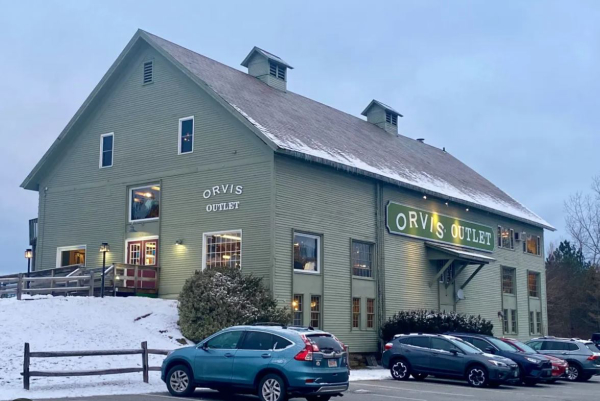
For those of us who have considered Orvis a legacy brand, as much a part of fishing as Isaac Walton, the announcement Monday that the company was closing some stores, laying off 8% if their workforce and putting an end to their venerated catalog was an unpleasant surprise.
The 170-year old Vermont company has 70 retail stores and 10 outlets in the United States, in addition to 18 in the United Kingdom. No word yet on which locations will be closed. Earlier this year, the company announced a relocation from its headquarters in Sunderland, Vermont, to smaller offices in Manchester, Vermont, so maybe the writing was on the wall.
I was an Orvis fan years ago, and once even spent a half day on the water with Perk Perkins, who was then CEO, chasing uncooperative Florida bass despite his wonderful casting ability, and perhaps because of my much less wonderful skills.
But the announcement set me to thinking, when was the last time I bought something from Orvis?

I’d guess a whole lot of us will be asking that question. The way we buy gear has changed dramatically, and for the vast majority of us, the pleasure in owning high-quality “stuff” does not seem to be as pronounced anymore.
Why will anyone buy flies at $3 each from Orvis—and wait a week or so for delivery—when they can order a dozen flies for $10 on Amazon and get them in two days? The fish really don’t know the difference in most cases.
The same is true of high end rods and reels—while all of us spend more than we probably should on tackle, there are very few of us willing to cough up more than a couple hundred bucks for a rod. In all honesty, it just doesn’t make sense unless you simply want it as “man jewelry”, and some of the cache of expensive stuff is fading rapidly among outdoors people—except when it comes to forward facing sonar and bass boats, apparently. Dependable long lasting stuff is all we ask for. Me, personally, I don’t want a rod I have to keep in a case when it’s not in my hand.
And when it comes to those tweedy country gentleman/woman outfits that Orvis (and L.L.Bean, too) used to sell so widely, the generation that loved them is all but gone, replaced by t-shirts and jeans, shorts and halter tops. Industry observers say that the clothing business was a much bigger income producer for the company than fly fishing gear, and that apparently has faded, as well.

Like many in the fishing and boating business, Orvis was carried along by the covid phenomenon, in which many of us had time off work and government money to spend. Now that is in the rear view mirror, and many families are turning their buying to other venues, perhaps since they have less leisure time.
Add to that Baby Boomers, many of whom loved the tweedy look, are all but gone, Gen X is starting to fade, Gen Z is way more likely to spend money on digital stuff than on outdoorsy clothing and gear, and the Millennials—who knows what they do down there in their parents basements, but they apparently do a lot of it in their pajamas.
To be sure, this is not the death knell for Orvis and the company may yet thrive, on a different basis, with fewer brick and mortar locations, a lot more online sales. But the pinch on this legacy brand is truly a sign of the times.
Orvis is apparently doing what they can for the employees they’re letting go. Dismissed employees will receive two months of full pay and benefits, along with additional severance pay and assistance with health insurance and job transition services. It’s more than many companies do when they let people go, a sign that the family intends to remain good corporate citizens, even when times are tough and the realities of profit-making require stringent management.
— Frank Sargeant